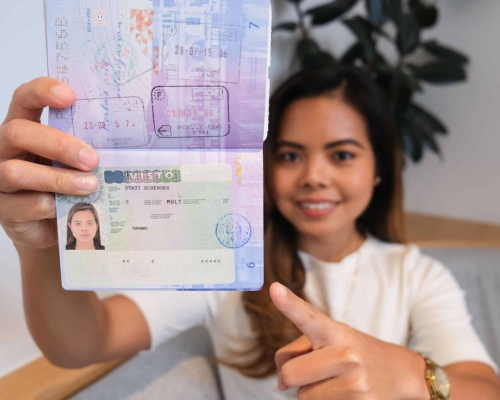
What is the Schengen Visa?
The Schengen Visa is a short-stay visa that allows individuals to travel within the Schengen Area, a zone comprising 27 European countries that have abolished passport and other types of border control at their mutual borders. Named after the Schengen Agreement signed in 1985, the visa facilitates seamless travel for tourists, business travelers, and students, enabling them to move freely across member countries as if within a single country.
Purpose of the Schengen Visa
The main objective of the Schengen Visa is to make traveling within Europe easier. Here are its key benefits:
Ease of Travel: Once granted, a Schengen Visa allows the holder to travel freely across all member countries without undergoing border checks, similar to domestic travel.
Boosting Tourism and Business: By removing the need for multiple visas, the Schengen Visa promotes tourism and business activities, making it easier for people to attend conferences, trade fairs, and other events across Europe.
Educational Opportunities: Students can participate in exchange programs, short-term courses, and internships in multiple countries without the hassle of applying for separate visas for each country.
Family Visits: Individuals can visit family members residing in different Schengen countries without the need for additional visas.
Countries in the Schengen Area
The Schengen Area consists of 27 European countries that have eliminated passport controls at their shared borders, allowing for effortless travel for both residents and visitors. The member countries are Austria, Belgium, the Czech Republic, Denmark, Estonia, Finland, France, Germany, Greece, Hungary, Iceland, Italy, Latvia, Liechtenstein, Lithuania, Luxembourg, Malta, the Netherlands, Norway, Poland, Portugal, Slovakia, Slovenia, Spain, Sweden, Switzerland, and Monaco. Although not all EU nations are part of the Schengen Area (such as Ireland), several non-EU countries like Norway, Iceland, Switzerland, and Liechtenstein are included. This creates a vast travel network with simplified border procedures for travelers.
Types of Schengen Visas
There are different types of Schengen Visas tailored to the needs of various travelers:
Uniform Schengen Visa (USV): This is the most common type, allowing for tourism, business, family visits, and short-term educational purposes. It allows for stays of up to 90 days within a 180-day timeframe.
Limited Territorial Validity Visa (LTV): This visa allows travel only within the issuing Schengen country or other specified countries. It is usually granted for humanitarian reasons or under exceptional circumstances.
National Visa: For individuals intending to stay longer than 90 days, such as students, workers, or family members of EU/Schengen citizens, a national visa issued by the specific country is required. These visas often allow travel within the Schengen Area for short periods.
Application Process
The application procedure for a Schengen Visa includes several steps:
Identify the Required Visa Type: Choose the correct type of Schengen Visa based on the specific purpose of your travel.
Complete the Application Form: Accurately fill out the visa application form, ensuring all required information is provided.
Gather Required Documents: This includes a valid passport, passport-sized photos, travel itinerary, proof of accommodation, travel insurance, proof of financial means, and a cover letter explaining the purpose of the visit.
Schedule an Appointment: Book an appointment at the consulate or embassy of the country you plan to visit or the country where you will spend the most time.
Attend the Visa Interview: Present your application and documents, and answer any questions posed by the consulate officer.
Pay the Visa Fee: Pay the applicable visa fee, which varies depending on the type of visa and the applicant's age.
Allow Time for Processing: Visa processing durations can differ, so it's advisable to submit your application well ahead of your intended travel dates.
The Schengen Visa significantly simplifies travel within Europe, offering convenience and fostering greater mobility across 27 member countries. Whether for tourism, business, education, or family visits, understanding the Schengen Visa and its application process can help travelers take full advantage of the opportunities Europe has to offer.